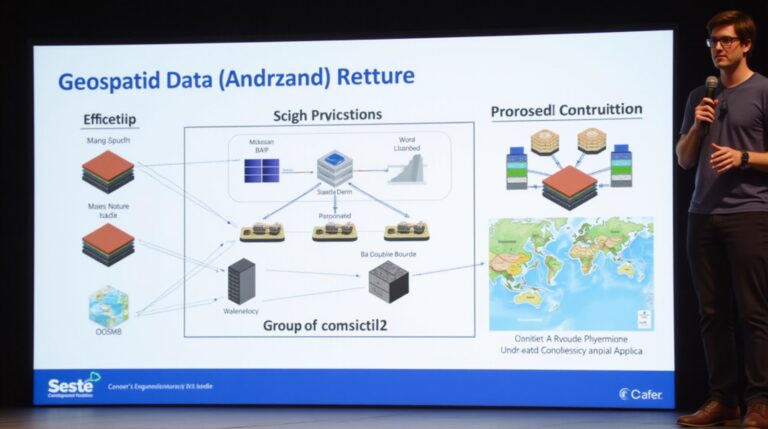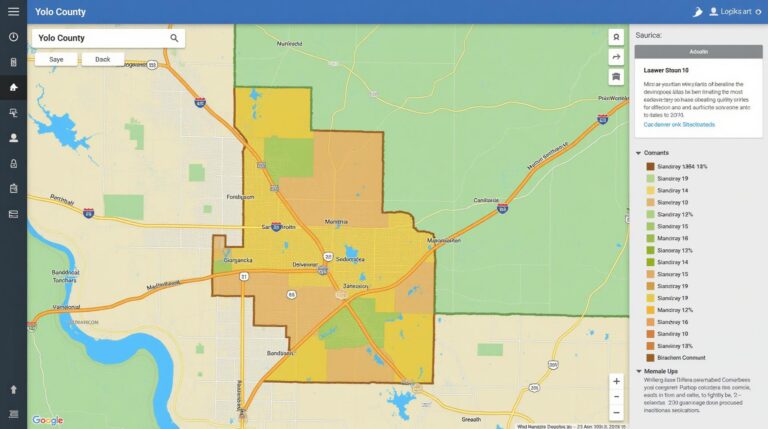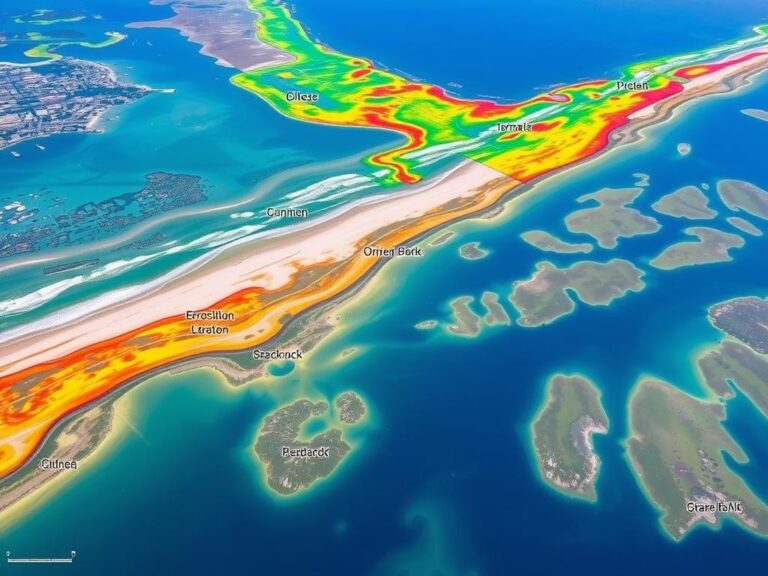GeoAI for Smart City Infrastructure – Asset Tracking
GeoAI for Smart City Infrastructure: Asset Tracking
The burgeoning Smart City movement promises innovative solutions to improve urban living. At the heart of this revolution lies a critical component: optimizing infrastructure management. One area of significant progress is leveraging the power of GeoAI for asset tracking. This approach involves using Artificial Intelligence to connect physical assets with real-time insights, significantly impacting everything from operational efficiency to public safety.
What is GeoAI?
GeoAI, or Geographic Artificial Intelligence, is a branch of AI that uses geospatial data to derive actionable insights. In simpler terms, it’s the ability of AI algorithms to understand spatial data and make sense of world-altering geographical elements. In the context of Smart City infrastructure, this involves:
- Satellite Imagery and Remote Sensing data: Analyzing aerial photography for visual insights, identifying changes, and tracking assets like parking lots, bridges, and trash bins.
- Location Data: Using GPS devices to monitor the precise location and movements of equipment, vehicles, or even residents.
- Sensor Data: Integrating data from smart sensor networks to capture specific environmental conditions like temperature, wind speed, and air quality, providing valuable data on the state of infrastructure.
Benefits of GeoAI for Asset Tracking
The application of GeoAI comes with a flurry of impressive perks for cities, including:
- **Enhanced Efficiency and Productivity: ** Automatic monitoring of assets frees up human resources to focus on more critical tasks, leading to increased operational efficiency in infrastructure maintenance and safety checks.
- **Proactive Maintenance: ** GeoAI predicts potential failures and bottlenecks before they happen, allowing facilities managers to intervene with preventative measures, reducing downtime and minimizing financial costs.
- **Improved Asset Utilization:** By integrating fleet tracking and analyzing locations, cities can optimize asset allocation and reduce idle units, leading to potential cost savings.
- **Enhanced Public Safety:** Real-time alerts based on location data can be critical for detecting issues like flooding, fire hazards, and crime-related incidents, allowing for timely and efficient response strategies.
Practical Applications of GeoAI in Smart Cities
The potential for GeoAI extends far beyond passive asset tracking.
- **Smart Roads and Transportation:** GeoAI monitors traffic flow analysis, allows dynamic rerouting of vehicles, and enhances safety through monitoring conditions like road cracks and potholes.
- **Energy Infrastructure Management:** Tracking pipelines, power grids, and renewable energy sources allows proactive maintenance, improves grid stability, and reduces energy losses.
- **Water Management and Sustainability:** GeoAI optimizes water resource allocation, predicts water quality issues, and minimizes leakage using location-triggered data.
- **Predictive Healthcare:** Incorporating healthcare spaces, GeoAI predicts patient needs, based on tracking patient patterns, can help streamline operations, and improve accessibility.
How to Get Started with GeoAI for Asset Tracking
Ready to embrace the future? Here’s how to get started.
- **Assess Your Needs:** Identify your critical infrastructure assets and their specific needs. Define the areas where GeoAI will be most valuable.
- **Invest in Technologies:** Explore AI-powered platforms and choose technologies that align with your budget and technical expertise. Consider open-source alternatives if needed.
- **Data Collection and Integration:** Establish a comprehensive data collection system to feed information into your GeoAI solution. This might involve collaborating with existing sensors, utilizing public data feeds, or incorporating data from mobile devices.
- **Training and Skill Development:** Invest in your team’s capability by providing training on working with GeoAI platforms and interpreting the resulting insights.
- **Pilot Projects and Iterations:** Start small with a pilot project to test your chosen technology, refine its performance, and gather evidence of its effectiveness.
GeoAI offers a unique opportunity for transforming the way we manage our infrastructure for a smarter, more secure, and ultimately sustainable future.
Check similar topics:
GeoAI Asset Tracking FAQs
What is GeoAI asset tracking?
GeoAI asset tracking uses the power of artificial intelligence to monitor and analyze the geographical movements of your assets in real-time.
Where can I find more information on GeoAI asset tracking?
You can find more information on our products page at www.techgeo.org/products.
What are the available formats for GeoAI asset tracking data?
We provide data in various formats, including:
- CSV
- JSON
- GeoJSON
What types of assets can be tracked with GeoAI?
Our GeoAI asset tracking software can monitor a wide variety of assets, including:
- Equipment
- Vehicles
- Containers
- Goods
How do I use GeoAI asset tracking?
GeoAI asset tracking software is integrated with our advanced monitoring dashboard that will guide you through the set-up and basic usage. www.techgeo.org/resources
I am looking to benefit from GeoAI, is it suitable for my business?
The usefulness of GeoAI Asset tracking is highly dependent on your industry and specific needs. To determine if GeoAI Asset tracking is suitable for your particular business, consider these factors:
- Do you manage critical assets that require real-time tracking?
- Do you have diverse assets with potential security vulnerabilities?
- Do you need to optimize inventory management and efficiently track asset utilization ?
For more detailed assistance, contact our experts at www.techgeo.org/contact.
Conclusion: The Importance of GeoAI Asset Tracking
GeoAI asset tracking unlocks significant advantages for businesses: improved asset visibility, optimized logistics, enhanced security, and improved decision-making. By harnessing the power of AI and geo-spatial knowledge, you gain valuable insights into your assets’ locations and activities, facilitating more efficient resource allocation, risk management, and overall cost optimization.






